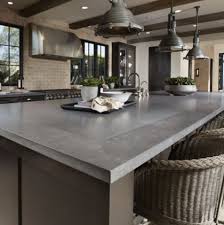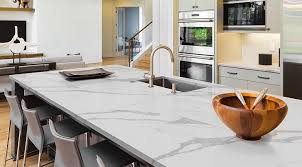Natural quartz is a stunning and versatile material that has been used in home decor for centuries. Its unique combination of beauty and durability makes it a popular choice for countertops, backsplashes, and other decorative elements in the home. In this article, we will explore the various ways in which natural quartz can be incorporated into home decor to create a luxurious and stylish living space. Whether you are looking to add a touch of elegance to your kitchen or bathroom, or simply want to enhance the natural beauty of your home, natural quartz is the perfect choice for any interior design project. Join us as we discover the beauty of natural quartz in home decor.
Natural quartz is a versatile and beautiful material that is becoming increasingly popular in home decor. It is a type of stone that is formed from the crystallization of silicon dioxide, giving it a unique and eye-catching appearance. Quartz is prized for its durability and low maintenance, making it an excellent choice for countertops, flooring, and backsplashes in kitchens and bathrooms. In addition to its practical benefits, natural quartz is available in a wide range of colors and patterns, making it easy to find the perfect match for any design style. Whether you prefer a sleek and modern look or a more rustic and traditional feel, there is a quartz option to suit your taste. Beyond its use in countertops and flooring, natural quartz can also be incorporated into home decor through the use of decorative objects and accessories. Vases, bookends, and sculptures made from quartz can add a touch of elegance and sophistication to any room. Overall, natural quartz is a material that offers both beauty and practicality, making it an excellent choice for home decor. Whether you are looking to update your kitchen or add a unique accent to your living room, consider exploring the possibilities of natural quartz in your home.
The Many Uses of Natural Quartz in Everyday Life

Natural quartz is a versatile mineral that finds numerous applications in everyday life. It is commonly used in the production of glass, ceramics, and electronics. In the form of quartz crystal, it is utilized in timekeeping devices such as clocks and watches. Additionally, natural quartz is a key ingredient in the manufacturing of various products including kitchen countertops, flooring, and decorative stone. Its hardness and durability make it a popular choice for construction materials. Furthermore, natural quartz is also used in the production of jewelry and as a component in various industrial processes such as foundry molds and abrasives. Its diverse range of uses makes natural quartz an indispensable mineral in various industries and everyday consumer products.
Exploring the Formation and Properties of Natural Quartz

Exploring the Formation and Properties of Natural Quartz involves studying the geological processes that lead to its formation within the Earth's crust, as well as the physical and chemical properties that define its unique characteristics. Researchers analyze the mineral's crystal structure, color, transparency, and hardness, as well as its potential industrial and commercial applications. This research provides valuable insights into the Earth's history and the practical uses of quartz in various industries, such as electronics, manufacturing, and jewelry.
The Healing Powers of Natural Quartz Crystals

Quartz crystals are believed to have healing powers due to their ability to amplify and channel energy. They are said to help balance and align the body's energy centers, known as chakras, and promote physical, emotional, and spiritual well-being. Many people use quartz crystals for meditation, as they are said to help quiet the mind and enhance focus. They are also used in alternative medicine practices such as crystal healing and Reiki, where they are placed on specific parts of the body to promote healing and balance. Additionally, quartz crystals are often used in jewelry or as decorative pieces in the home to bring positive energy and harmony. While scientific evidence supporting the healing powers of quartz crystals is limited, many people believe in their ability to promote wellness and overall vitality.
How to Care for and Clean Natural Quartz Countertops
lv cabinets
To care for and clean natural quartz countertops, use a mild dish soap and warm water to clean up spills and messes. Avoid using abrasive or acidic cleaners, such as vinegar or lemon juice, as these can damage the surface. Wipe down the countertops with a soft cloth or sponge, and rinse with clean water. To prevent staining, it's important to wipe up spills promptly and avoid placing hot pots or pans directly on the surface. For regular maintenance, use a non-abrasive surface cleaner or a mixture of mild dish soap and water. For tougher stains, a gentle rubbing with a non-abrasive sponge or cloth may be necessary. Overall, natural quartz countertops are relatively low-maintenance and can be kept looking like new with routine care and cleaning.
The Growing Popularity of Natural Quartz in Home Decor
Natural quartz has been steadily growing in popularity within the home decor industry in recent years. This is due to its versatile aesthetic appeal, durability, and low maintenance requirements. The unique and striking appearance of natural quartz makes it a desirable choice for a variety of applications, including countertops, backsplashes, and even flooring. In addition to its visual appeal, natural quartz is also prized for its exceptional hardness and resistance to scratching and staining. As such, it is often favored over other materials such as marble or granite for use in high-traffic areas of the home. With the increasing emphasis on sustainability and eco-friendly design, the use of natural quartz in home decor is likely to continue to rise in the coming years.
The Environmental Impact of Mining Natural Quartz<
lv cabinet & countertop/h2>
Mining natural quartz can have a significant environmental impact. The extraction process can result in habitat destruction, soil erosion, and the release of harmful chemicals into the environment. Additionally, the energy-intensive process of mining and refining quartz can contribute to greenhouse gas emissions and air pollution. Waste and byproducts from the mining process can also contaminate water sources, affecting local ecosystems and wildlife. Overall, the mining of natural quartz can have a detrimental effect on the environment if not conducted sustainably and responsibly.
